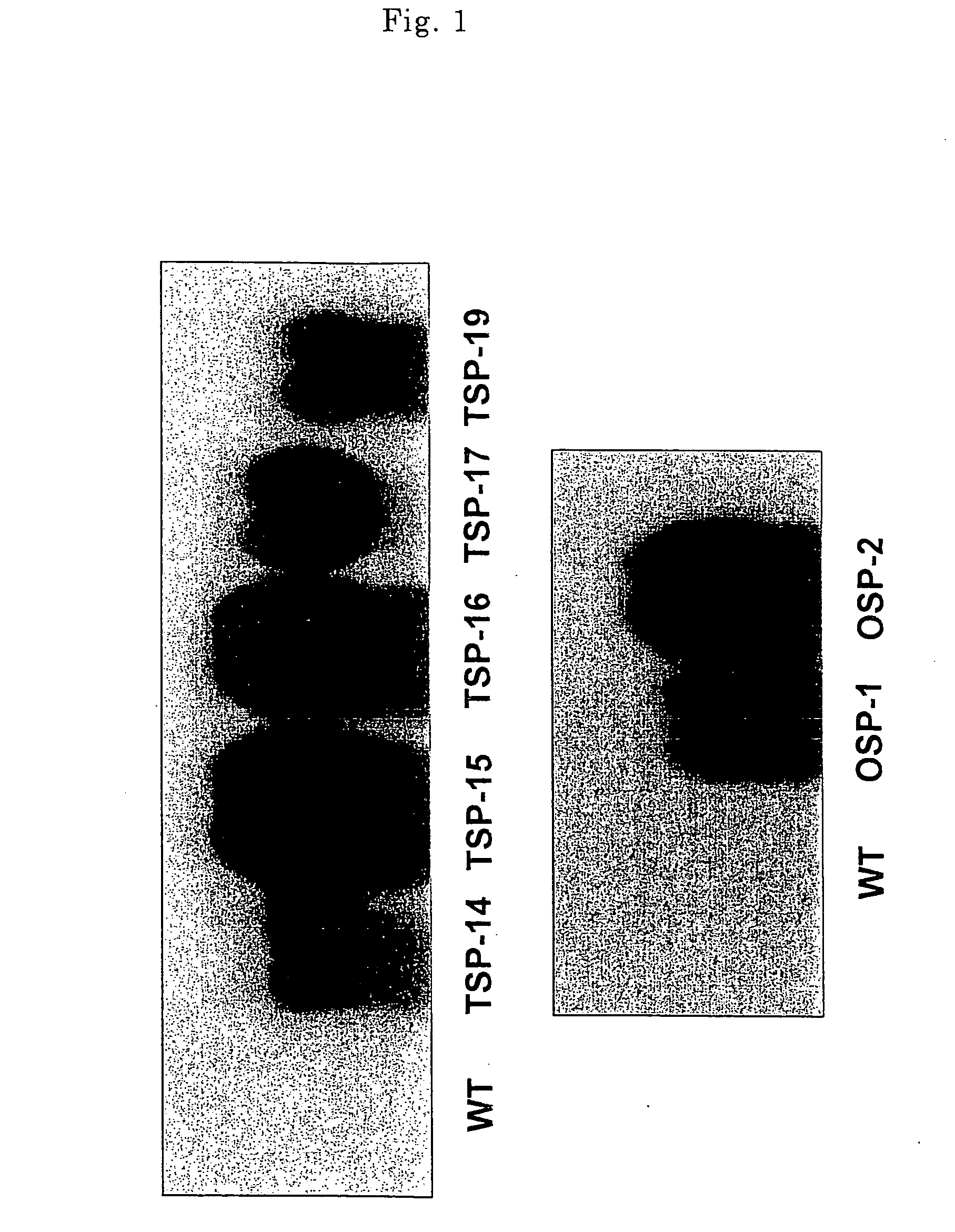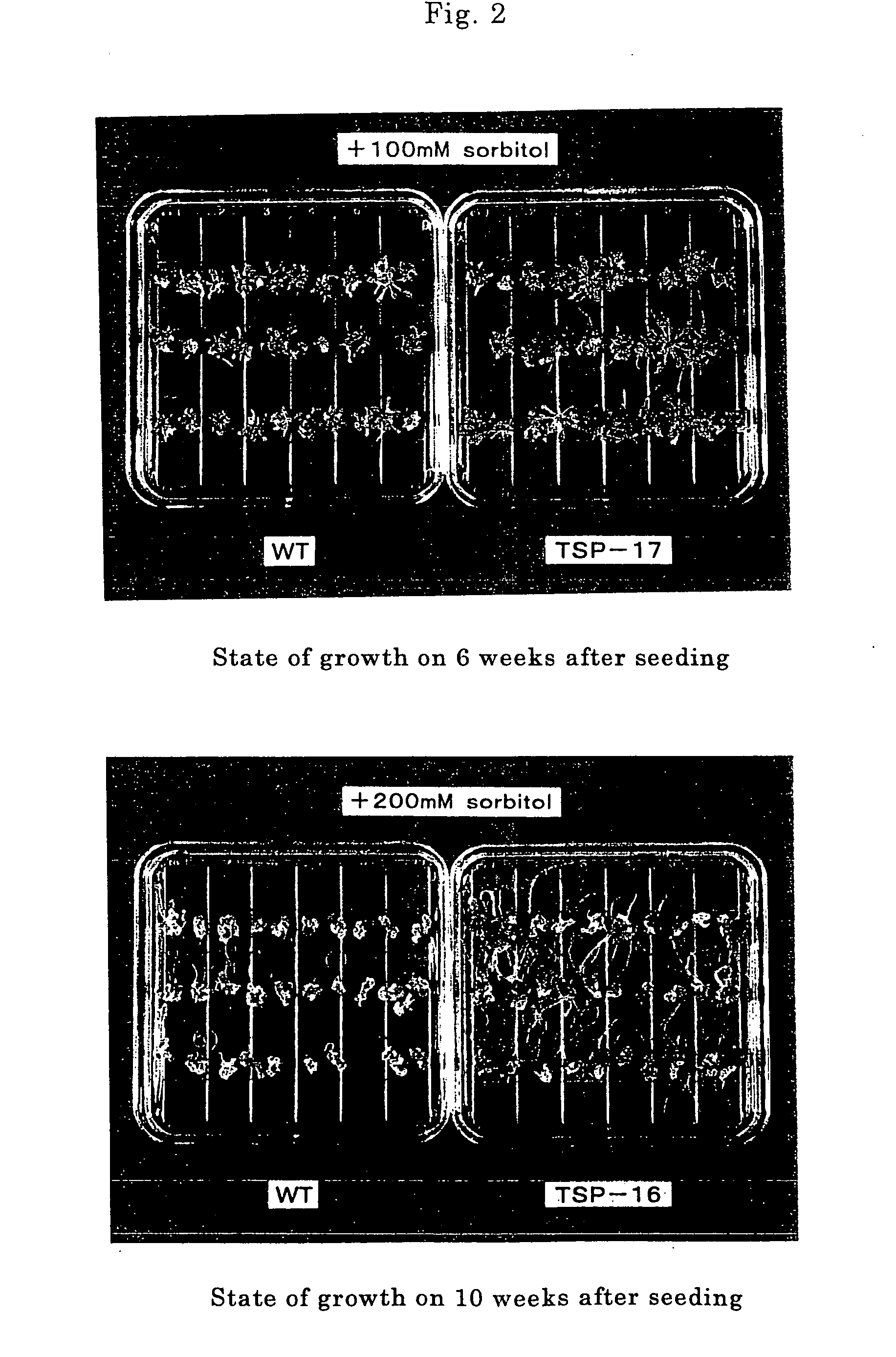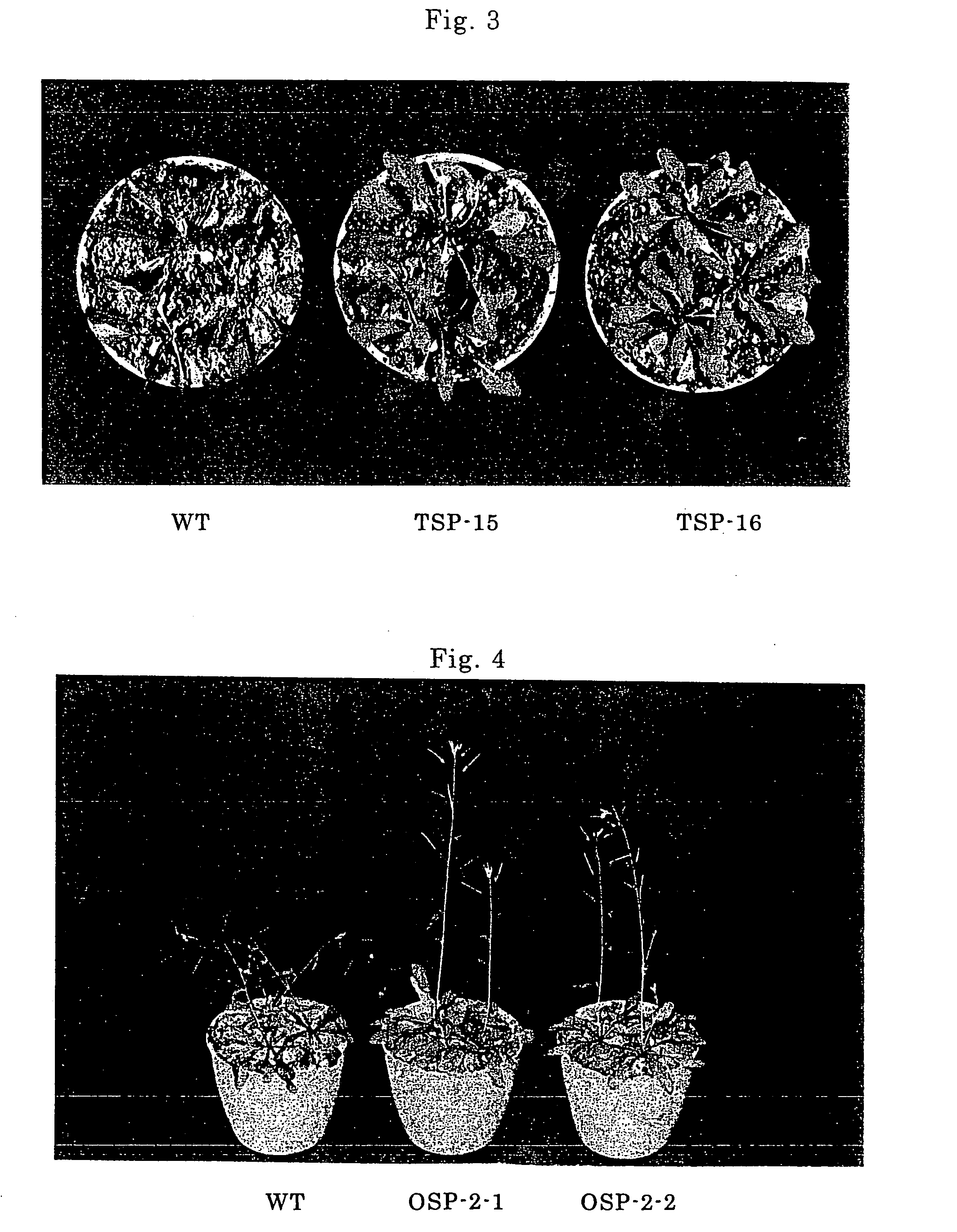Method for increasing expression of stress defense genes
a technology of stress defense genes and expression levels, applied in the field of increasing the expression of stress defense genes, can solve the problems of increasing severe shortages, and affecting the physiological function of cells, so as to improve the quality of life, reduce the risk of crop exposure to temperature environments, and improve the effect of production
- Summary
- Abstract
- Description
- Claims
- Application Information
AI Technical Summary
Benefits of technology
Problems solved by technology
Method used
Image
Examples
example 1
Cloning Spermidine Synthase Gene Derived from Plant
[0089] A spermidine synthase gene derived from Cucurbita ficifolia Bouch was acquired in accordance with the description in Example 2 in WO02 / 23974 (FSPD1, SEQ ID NOS:1 and 2). A spermidine synthase gene (OSPD2, SEQ ID NOS:3 and 4) derived from the rice plant was acquired by the method shown below. In accordance with the description in Example 2 in WO02 / 23974, the spermidine synthase gene (FSPD1, SEQ ID NOS:1 and 2) derived from Cucurbita ficifolia Bouch, an S-adenosylmethionine decarboxylase gene (FSAM24, SEQ ID NOS:5 and 6) and an arginine decarboxylase gene (FADC76, SEQ ID NOS:7 and 8) were obtained. A spermidine synthase gene (FSPM5, SEQ ID NOS:9 and 10) derived from Arabidopsis thaliana was obtained in accordance with the description in Example 1 in JP 2002-351750 A. The spermidine synthase gene (OSPD2, SEQ ID NOS:3 and 4) derived from the rice plant was acquired by the method shown below.
(1) Preparation of poly (A)+RNA
[009...
example 2
Preparation and Analysis of Transgenic Arabidopsis thaliana
(1) Preparation of Expression Construct
[0102] The FSPD1 polyamine synthase gene given in SEQ ID NO.1 was cleaved with XhoI in such a way that the entire reading frame of the base sequence was included, and the fragment was purified by the glass milk method. pGEM-7Zf (Promega) was then cleaved with XhoI, and the FSPD1 fragments were subcloned in the sense and antisense directions. The FSPD1 fragments were again cleaved with the XbaI and KpnI restriction enzymes at the multicloning site of pGEM-7Zf, and were each subcloned to the binary vector pBI101-Hm2 to which the 35S promoter (or horseradish peroxidase C2 promoter [U.S. Pat. No. 3,259,178] which was a stress / disease inducible promoter) had been ligated. The resulting plasmid was designated pBI35S-FSPD1+ / −, pBIC2-FSPD1+ / −. Transformed E. coli JM109 was designated Escherichia coli JM109 / pBI35S-FSPD1+ / −, Escherichia coli JM109 / pBIC2-FSPD1+ / −.
[0103] The OSPD2 polyamine syn...
example 3
Microarray Analysis of Transgenic Arabidopsis
[0115] T3 homozygous cell lines in which the amounts of contained spermidine and spermine had been increased in the range of 1.1 to 3.0 times compared with those in the wild type were selected in the T3 transformants. The seeds from the wild type (WT) and the T3 homozygous cell lines (TSP-16, OSP-2) were seeded in plastic pots containing the potting compost (Metromix 250 supplied from Hyponex Japan). Sufficient water was given to the soil, and the pots were covered with Saran wrap, to which the cold temperature treatment (synchronization) was given for 2 days. After the cold temperature treatment, the pots were transferred to the cultivation room, and the acclimation for about one week was performed under the long day condition (22° C., lighten for 16 hours, 50 μmol m−2 sec−1 PPFD). After one week, the Saran wrap was removed, and the cultivation was started under the above long day condition. On the 50th day (just before internode elonga...
PUM
| Property | Measurement | Unit |
|---|---|---|
| Fraction | aaaaa | aaaaa |
| Fraction | aaaaa | aaaaa |
| Fraction | aaaaa | aaaaa |
Abstract
Description
Claims
Application Information
 Login to View More
Login to View More - R&D
- Intellectual Property
- Life Sciences
- Materials
- Tech Scout
- Unparalleled Data Quality
- Higher Quality Content
- 60% Fewer Hallucinations
Browse by: Latest US Patents, China's latest patents, Technical Efficacy Thesaurus, Application Domain, Technology Topic, Popular Technical Reports.
© 2025 PatSnap. All rights reserved.Legal|Privacy policy|Modern Slavery Act Transparency Statement|Sitemap|About US| Contact US: help@patsnap.com



